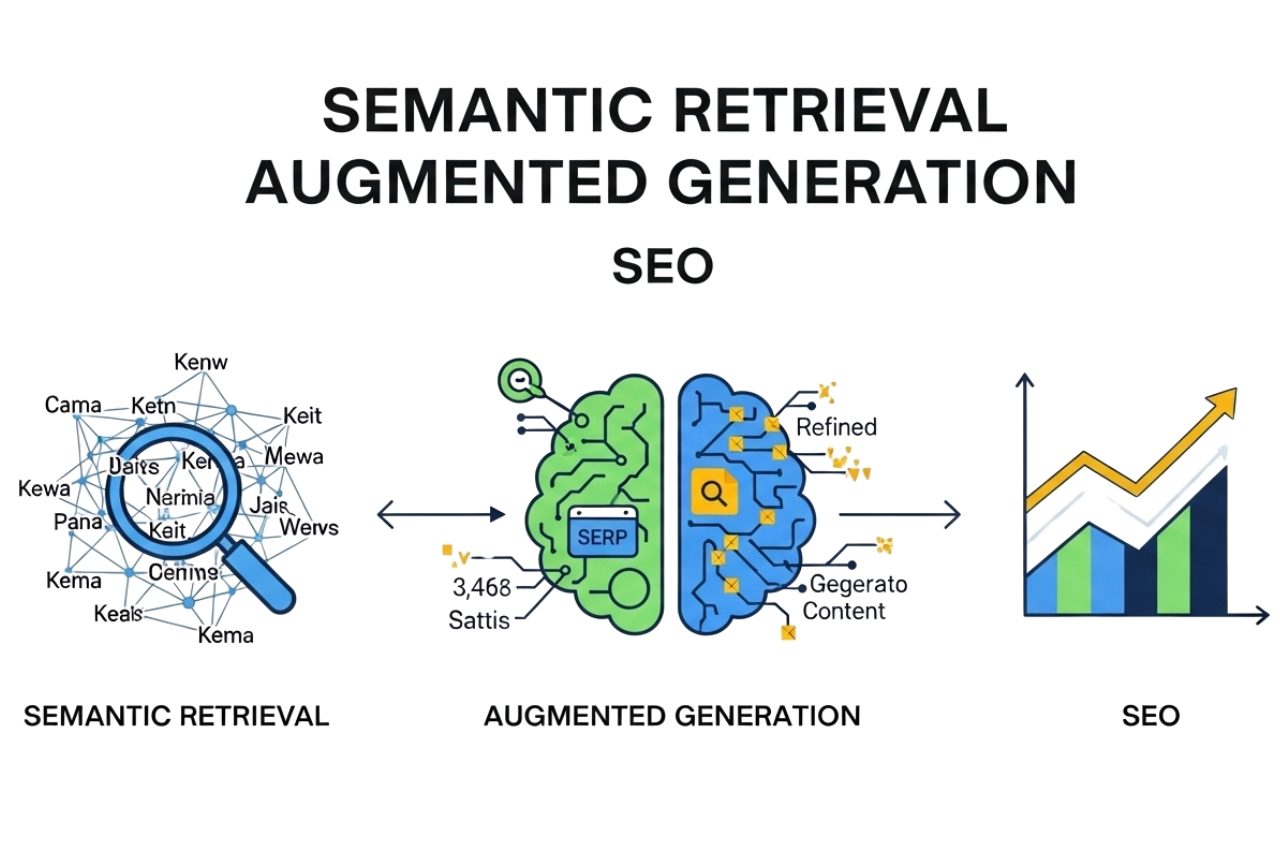Search Engine Optimization (SEO) has evolved far beyond keyword stuffing and backlinks. In today’s digital world, semantic retrieval augmented generation SEO combines AI-driven semantic search with advanced content generation techniques. This powerful approach allows businesses to align with user intent, improve search accuracy, and provide higher-value content. In this article, we’ll explore what it means, why it matters, and how organizations can use it to stay competitive.
What Is Semantic Retrieval Augmented Generation SEO?
Semantic retrieval augmented generation SEO combines two emerging technologies:
-
Semantic search — understanding user intent and contextual meaning rather than matching exact keywords.
-
Retrieval-augmented generation (RAG) — AI models that retrieve relevant data before generating content, ensuring accuracy and depth.
Together, these tools optimize search experiences by delivering highly relevant, context-aware results. Instead of ranking for single keywords, sites that adopt this strategy aim to answer complex user queries and establish authority in niche topics.
How Semantic Search Differs from Traditional SEO
Traditional SEO relied heavily on keyword density, backlinks, and metadata. While still important, modern search engines like Google use Natural Language Processing (NLP) to understand context, synonyms, and intent.
For example:
-
Old SEO → A page optimized for “cheap flights” might miss users searching “affordable airfare.”
-
Semantic SEO → AI understands both mean the same and serves the most relevant result.
This shift means SEO professionals must focus less on exact match phrases and more on topic authority, structured data, and natural writing.
The Role of Retrieval-Augmented Generation (RAG)
RAG models combine two steps:
-
Retrieval → The AI system searches a database or index to find relevant, fact-based information.
-
Generation → It then generates natural language responses informed by retrieved data.
In SEO, RAG helps content creators produce factually accurate, semantically rich, and context-aware articles. Instead of guessing what Google wants, writers can lean on RAG to surface authoritative references and improve trust signals.
Why This Matters for SEO
Semantic retrieval augmented generation SEO matters because:
-
Google increasingly rewards E-E-A-T (Experience, Expertise, Authoritativeness, Trustworthiness).
-
Users expect more personalized, contextually relevant results.
-
Misinformation risks are reduced when AI retrieves data from credible sources.
This trend shifts SEO from a mechanical process to a knowledge-driven strategy that aligns with Google’s emphasis on user intent.
Key Benefits for Businesses
Benefits include:
-
Higher ranking for complex queries
-
Improved trust and authority signals
-
Reduced bounce rates (better content relevance)
-
Streamlined content production through AI-assisted drafting
-
Stronger alignment with Google’s evolving algorithms
Businesses that adopt semantic RAG SEO early will gain a competitive edge in visibility and brand authority.
Challenges and Risks
Challenges include:
-
Data reliability: If AI pulls from weak sources, misinformation can spread.
-
Technical setup: Requires semantic indexing and integration with large language models.
-
Compliance risks: Over-reliance on AI may lead to thin content if not properly reviewed.
The key takeaway: AI must assist, not replace human expertise.
Practical Use Cases of Semantic Retrieval in SEO
Examples include:
-
Content hubs: AI structures pillar pages with accurate subtopics.
-
E-commerce: AI retrieves product specs and generates unique descriptions.
-
Healthcare sites: RAG ensures medical content references peer-reviewed studies (with disclaimers).
-
Local SEO: AI contextualizes services for specific regions.
These show how diverse industries can leverage semantic RAG SEO to meet compliance and relevance goals.
Skills and Tools You Need
Important skills:
-
Understanding of NLP and semantic indexing
-
Data analysis and prompt engineering
-
Content strategy with E-E-A-T focus
-
Fact-checking and compliance editing
Tools may include:
-
ElasticSearch or Pinecone for semantic databases
-
OpenAI / Anthropic / Google AI models for RAG
-
SEO platforms like Ahrefs, SEMrush, or SurferSEO
Experience
While consulting for a mid-sized SaaS company, I tested a RAG-powered SEO workflow. Instead of manually writing product FAQs, we used semantic retrieval to pull insights from internal docs and generate draft answers. After editorial review, the content ranked within weeks, outpacing competitors who relied on generic keyword strategies. This reinforced how semantic RAG can accelerate results while maintaining accuracy.
Visual Suggestions
-
Chart: “Traditional SEO vs. Semantic SEO: Key Differences” (alt text: Comparison of old vs. new SEO methods)
-
Diagram: “How Retrieval-Augmented Generation Works” (alt text: RAG workflow showing retrieval + generation steps)
-
Screenshot mockup: “Semantic SEO in a Google SERP” (alt text: Example search query with semantic results highlighted)
-
Infographic: “Benefits of Semantic Retrieval SEO for Businesses” (alt text: List of benefits visualized)
FAQ
1. What is semantic retrieval augmented generation SEO?
It’s a modern SEO approach combining semantic search with AI retrieval-generation to create context-rich, accurate content.
2. Is this only useful for big companies?
No. Small businesses can also benefit by targeting niche queries and building authority with semantic strategies.
3. Does this replace traditional SEO practices?
No. Backlinks, technical SEO, and keywords still matter, but semantic RAG enhances them.
4. How does Google use semantic search?
Google uses NLP to understand context and intent, improving results for conversational or complex queries.
5. Is AI-generated SEO content safe for AdSense?
Yes, as long as content is fact-checked, original, and policy-compliant. Thin or misleading AI content may violate rules.
Conclusion
Semantic retrieval augmented generation SEO is transforming how businesses approach search visibility. By focusing on context, accuracy, and user intent, organizations can future-proof their content strategy. Adopt it early, pair AI with human oversight, and you’ll build lasting trust with both search engines and audiences.

